- Thuja occidentalis: Planting and Care
- Planting
- Care
- Common Problems
- Choosing the Perfect Location
- Sunlight
- Soil
- Wind Exposure
- Space
- Soil Preparation and Planting
- Soil Type and pH
- Soil Testing
- Preparing the Soil
- Planting
- Watering and Fertilizing
- Watering
- Fertilizing
- Pruning and Shaping Techniques
- 1. Timing:
- 2. Tools:
- 3. Pruning Techniques:
- 4. Shaping Techniques:
- 5. Aftercare:
- Common Pests and Diseases
- 1. Spider Mites
- 2. Bagworms
- 3. Cedar Apple Rust
- 4. Canker Diseases
- 5. Root Rot
- 6. Winter Burn
- 7. Insect Infestations
- Description of Varieties
- 1. Emerald Green
- 2. Techny
- 3. Yellow Ribbon
- 4. Rheingold
- 5. Nigra
- Thuja occidentalis ‘Smaragd’
- Thuja occidentalis ‘Golden Globe’
- Thuja occidentalis ‘Degroot’s Spire’
- Questions and Answers:
- What is Thuja occidentalis?
- What are the planting requirements for Thuja occidentalis?
- How often should I water Thuja occidentalis?
- What are the different varieties of Thuja occidentalis?
- How do I prune Thuja occidentalis?
- Videos: All you need to know about Thuja occidentalis Arborvitae
Thuja occidentalis, also known as the Eastern Arborvitae, is a popular evergreen tree that is commonly used for landscaping purposes. It is native to North America and is known for its attractive foliage and unique shape. Thuja occidentalis is easy to grow and requires minimal care, making it a favorite among gardeners and homeowners.
When planting Thuja occidentalis, it is important to choose a location that receives full sun to partial shade. This tree can tolerate a wide range of soil conditions, but it prefers well-drained soil that is slightly acidic. Before planting, it is recommended to loosen the soil and mix in compost or organic matter to improve drainage and fertility.
Thuja occidentalis is available in a variety of cultivars, each with its own unique characteristics. The ‘Smaragd’ variety, also known as Emerald Green Arborvitae, is a popular choice for hedges and privacy screens due to its dense, columnar shape. The ‘Golden Globe’ variety is known for its bright golden foliage, adding a burst of color to any landscape. Other popular varieties include ‘Degroot’s Spire’, ‘Rheingold’, and ‘Danica’, each with their own distinctive features.
Once planted, Thuja occidentalis requires minimal care. Regular watering is necessary during the first year to help establish the tree’s root system. After that, the tree is drought-tolerant and only requires supplemental watering during periods of prolonged dryness. Pruning is typically not necessary, but can be done to maintain the desired shape and size. Fertilizer is generally not needed, as Thuja occidentalis is a low-maintenance tree.
Thuja occidentalis: Planting and Care
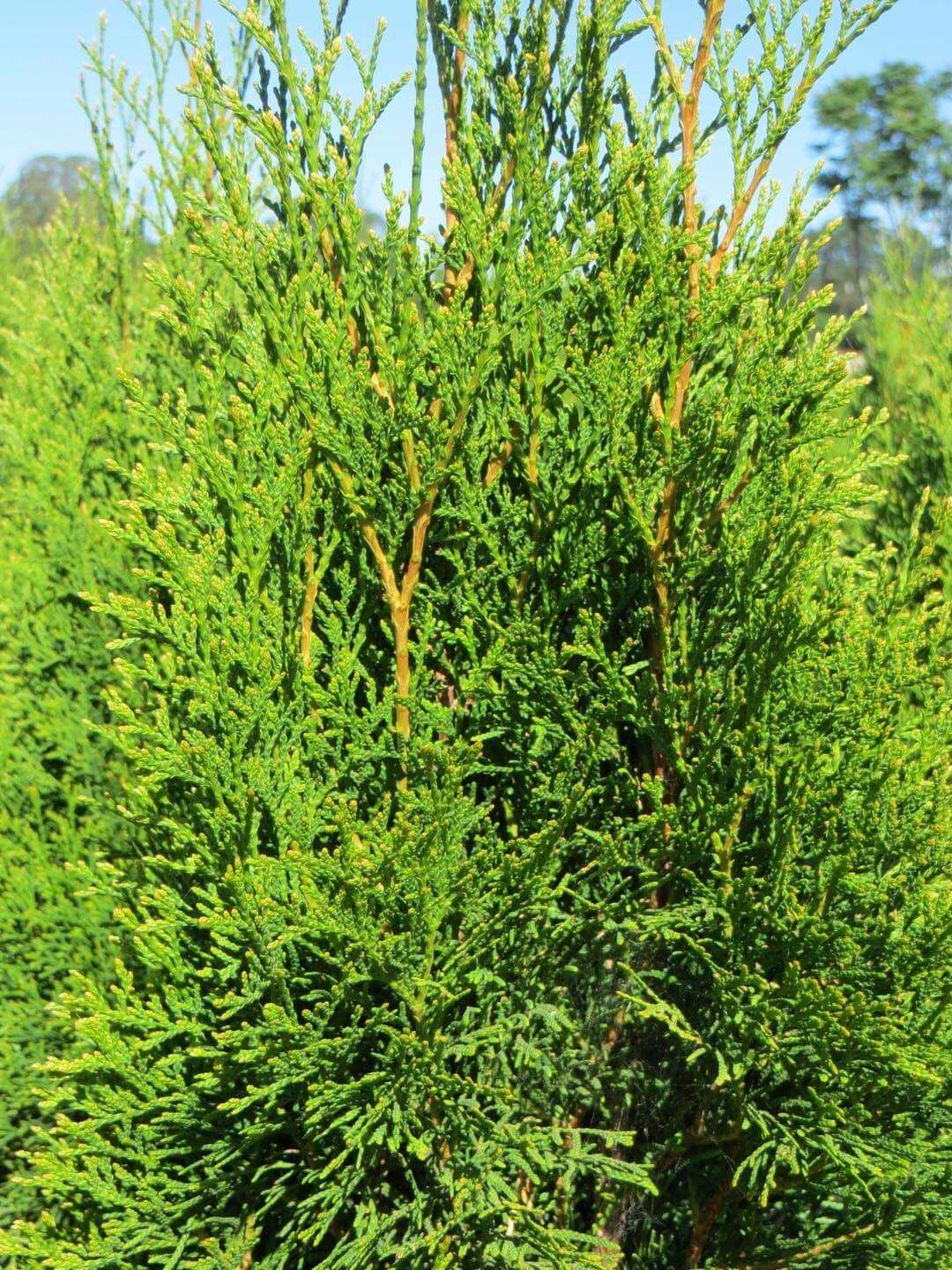
Thuja occidentalis, commonly known as American arborvitae or white cedar, is a popular evergreen shrub widely used in landscaping. It is native to North America and has many varieties that differ in size, color, and shape.
Planting
- Choose a location with well-draining soil and full sunlight.
- Dig a hole that is twice the width of the root ball and slightly shallower.
- Remove the plant from its container and gently loosen the roots.
- Place the plant in the hole, making sure the top of the root ball is level with the soil surface.
- Backfill the hole with soil and tamp it down lightly.
- Water the plant thoroughly.
Care
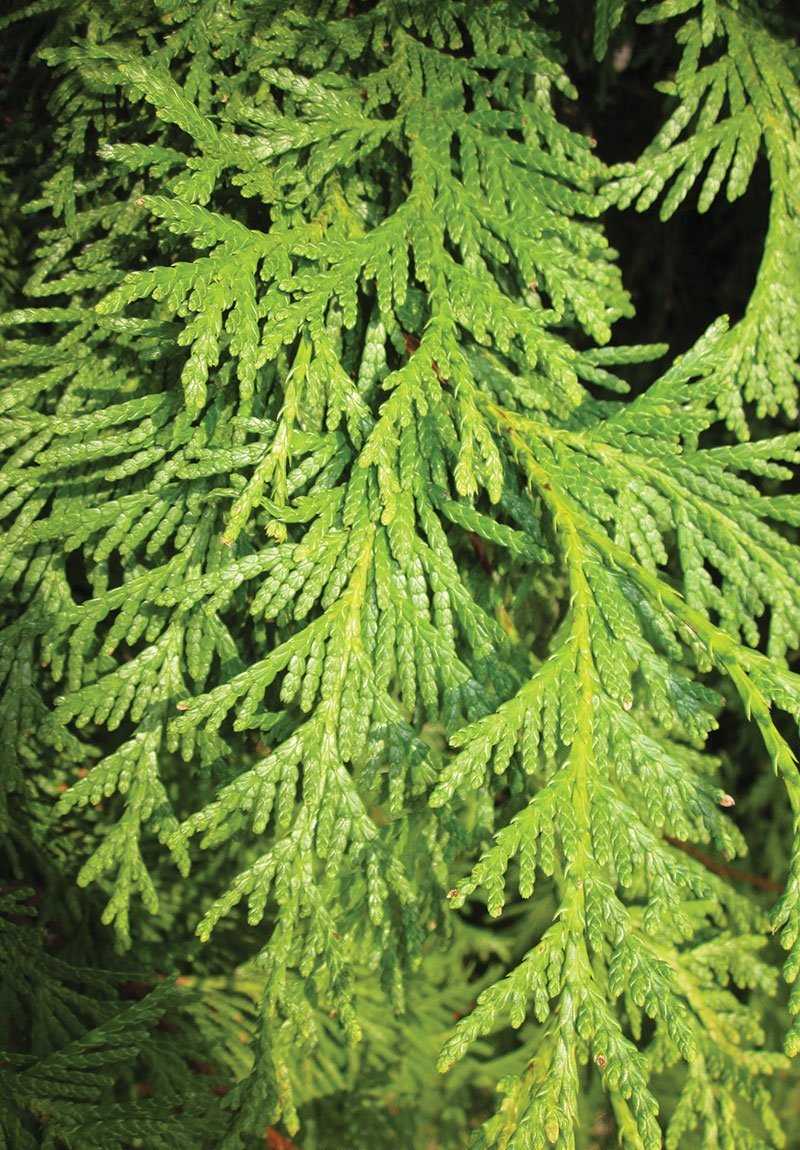
Thuja occidentalis requires minimal care once established, but there are a few things you can do to ensure its health and longevity:
- Watering: Water the plant deeply once a week during dry spells.
- Pruning: Prune the shrub in early spring to maintain its shape and remove any dead or damaged branches.
- Fertilizing: Apply a balanced slow-release fertilizer in early spring.
- Mulching: Apply a layer of mulch around the base of the plant to conserve moisture and suppress weeds.
- Protecting: Protect the shrub from strong winds and heavy snowfall, as these can cause damage.
Common Problems
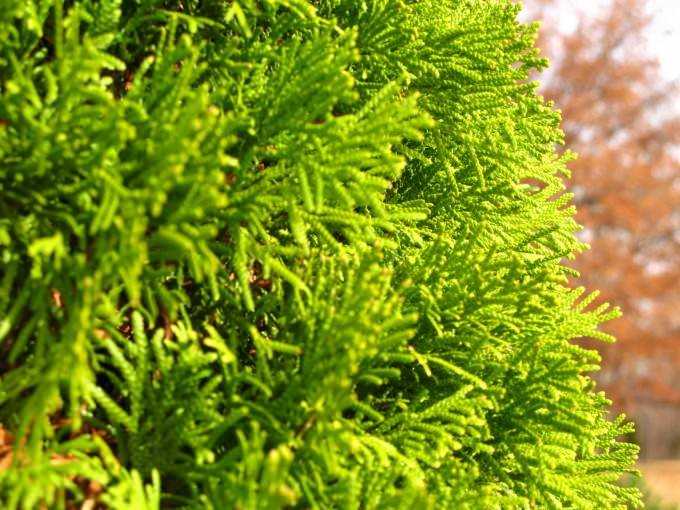
While Thuja occidentalis is generally a hardy and disease-resistant plant, it can still face some issues:
| Problem | Solution |
|---|---|
| Browning foliage | Ensure the plant is receiving enough water and is not exposed to extreme temperatures. |
| Root rot | Avoid overwatering and ensure proper drainage. |
| Discoloration or yellowing | Check the soil pH and adjust if necessary. Provide appropriate nutrients. |
By following these planting and care guidelines, you can enjoy a healthy and beautiful Thuja occidentalis shrub in your garden or landscaping project.
Choosing the Perfect Location
When considering planting Thuja occidentalis, it is important to choose the right location. The ideal spot for this evergreen shrub should meet certain criteria in order for it to thrive. Here are some factors to consider when selecting the perfect location for your Thuja occidentalis.
Sunlight
- Thuja occidentalis prefers full sun to partial shade.
- Ensure that the chosen location receives at least 6 hours of direct sunlight per day.
- Avoid planting in areas with excessive shade, as this can lead to poor growth and a lack of density in the foliage.
Soil
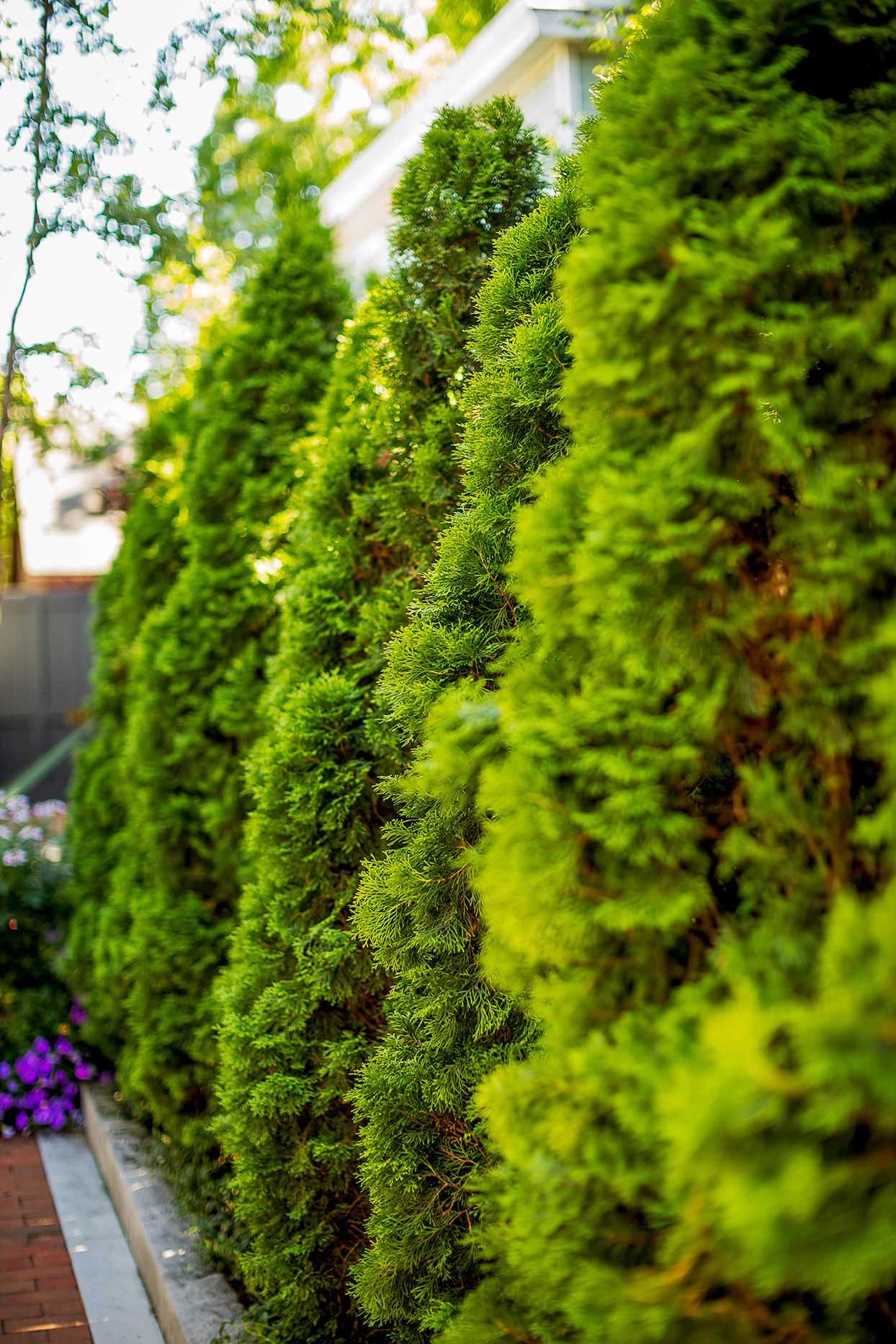
- Thuja occidentalis grows best in well-draining soil.
- The soil should be loamy and rich in organic matter.
- Avoid planting in areas with heavy clay soil or locations that are prone to waterlogging.
- Conduct a soil test to determine the pH level and make any necessary amendments to ensure a pH of 6.0-7.5.
Wind Exposure
- Thuja occidentalis is vulnerable to wind damage.
- Choose a location that is sheltered from strong winds, such as near a building or a fence.
- Avoid planting in open, exposed areas where the shrub can be easily damaged or uprooted by strong gusts.
Space
- Thuja occidentalis requires enough space to grow and spread.
- Ensure that the chosen location has enough room for the mature size of the specific variety you are planting.
- Avoid planting near structures, utilities, or other plants that could impede the growth of the shrub.
By carefully selecting the perfect location for your Thuja occidentalis, you can provide the optimal growing conditions for this beautiful evergreen shrub. Remember to also consider the specific requirements of the variety you are planting and make any necessary adjustments to accommodate its needs. With the right location and proper care, your Thuja occidentalis will thrive and enhance your garden for years to come.
Soil Preparation and Planting
Before planting Thuja occidentalis, it is important to prepare the soil properly. The right soil conditions will ensure the optimal growth and health of the plant.
Soil Type and pH
Thuja occidentalis prefers well-draining soil that is slightly acidic to neutral in pH. The ideal pH range for growing Thuja occidentalis is between 6.0 and 7.0. If the soil is too alkaline, you can lower the pH by adding sulfur or organic matter.
Soil Testing
It is recommended to get a soil test done before planting Thuja occidentalis. A soil test will help you determine the nutrient levels and pH of the soil. Based on the soil test results, you can make appropriate amendments to the soil to ensure optimal growing conditions for Thuja occidentalis.
Preparing the Soil
Start by clearing the planting area of any weeds, rocks, or debris. Loosen the soil using a garden fork or tiller to a depth of at least 12 inches. This will help improve soil drainage and allow roots to penetrate easily.
If the soil is heavy clay or compacted, you can amend it with organic matter such as compost or well-rotted manure. Mix the organic matter into the top few inches of soil to improve its structure and fertility.
Planting
To plant Thuja occidentalis, dig a hole that is slightly wider and shallower than the root ball of the plant. Gently remove the plant from its container and place it in the hole, making sure the top of the root ball is level with the surrounding soil.
Backfill the hole with the soil mixture, firming it gently around the roots to remove any air pockets. Water the newly planted Thuja occidentalis thoroughly to settle the soil. Mulch the area around the plant with a 2- to 3-inch layer of organic mulch, keeping it at least 2 inches away from the trunk.
It is recommended to space Thuja occidentalis plants at least 3 to 5 feet apart to allow for proper air circulation and growth.
Regular watering, especially during the first year of growth, is essential for the establishment of Thuja occidentalis. Check the moisture level of the soil regularly and water whenever it feels dry to the touch.
Watering and Fertilizing
Proper watering and fertilizing are essential for the healthy growth of Thuja occidentalis plants. Here are some guidelines to ensure your plants thrive:
Watering
Thuja occidentalis plants require regular watering, especially during dry periods. The frequency of watering will depend on the weather and soil conditions. Here are some tips for watering:
- Water the plants deeply, making sure the water reaches the root zone.
- Avoid overwatering, which can lead to root rot and other issues.
- Monitor the moisture level of the soil and water accordingly.
- It is better to water deeply and less frequently, rather than shallowly and frequently.
- Mulching around the base of the plants can help retain moisture and reduce water evaporation.
Fertilizing
Thuja occidentalis plants benefit from regular fertilization to provide the necessary nutrients for their growth. Here are some guidelines for fertilizing:
- Use a balanced slow-release fertilizer specifically formulated for evergreen shrubs.
- Follow the manufacturer’s instructions for dosage and application frequency.
- Apply the fertilizer in early spring, just before new growth starts.
- Avoid fertilizing during dry periods to prevent burning the plants.
- Water the plants after fertilizing to help the nutrients penetrate the soil.
By following these watering and fertilizing guidelines, you can ensure the healthy growth and development of your Thuja occidentalis plants.
Pruning and Shaping Techniques
Proper pruning and shaping techniques are essential for maintaining the health and appearance of Thuja occidentalis plants. Here are some tips to help you keep your plant in top condition:
1. Timing:
- Pruning should ideally be done in late winter or early spring, before new growth begins. This allows the plant to heal and recover quickly.
- Shaping can be done throughout the year, but it is best to avoid extreme heat or cold.
2. Tools:
- Use sharp, clean pruning shears or loppers to make clean cuts. This reduces the risk of disease and damage to the plant.
- If shaping the plant into a specific form, consider using a hedge trimmer or topiary shears for accuracy.
3. Pruning Techniques:

Thinning: Remove about 1/3 of the older, larger branches from the interior of the plant. This allows for better air circulation and light penetration.
Heading back: Trim the tips of the branches to encourage lateral growth and denser foliage. Make cuts just above a bud or lateral branch.
Shearing: Use hedge trimmers to create formal shapes or hedges. Start at the bottom and work your way up, trimming small sections at a time to maintain an even appearance.
4. Shaping Techniques:
Pom-pom: Shape the plant into a round or ball-like form. Trim the branches evenly to create a dense and compact shape.
Spiral: Start from the bottom and gently twist the branches around a support, such as a stake or wire frame. Trim excess growth to maintain a spiral shape.
Cone: Trim the branches evenly, starting from the bottom and tapering towards the top to create a conical shape.
Columnar: Leave the branches untrimmed, allowing the plant to grow naturally in a narrow, column-like shape. Remove any lateral branches to maintain a clean and upright form.
5. Aftercare:
- Water the plant thoroughly after pruning or shaping to help with recovery.
- Apply a balanced fertilizer in early spring to promote healthy growth.
- Monitor the plant regularly for any signs of disease or pests and take appropriate action if necessary.
By following these pruning and shaping techniques, you can enjoy a well-maintained and visually appealing Thuja occidentalis plant in your garden.
Common Pests and Diseases
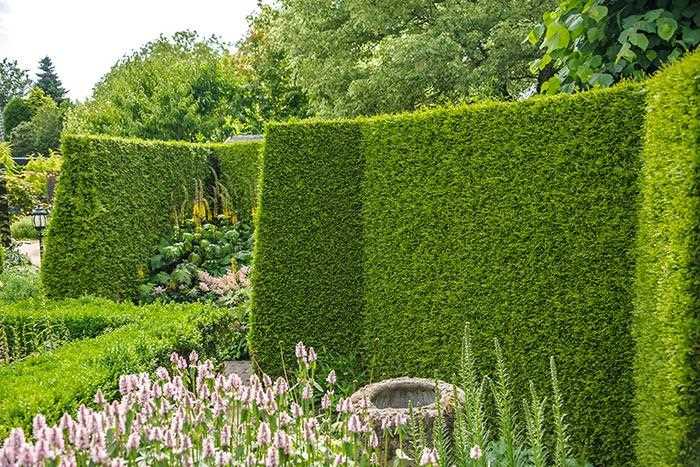
Thuja occidentalis is generally a hardy plant that is resistant to most pests and diseases. However, there are a few common issues that gardeners should be aware of:
1. Spider Mites
Spider mites are tiny pests that can infest Thuja occidentalis. They are difficult to spot with the naked eye, but their presence can be identified by the fine webbing they produce on the plant. Spider mites suck the sap from the leaves, causing them to turn yellow and eventually die.
2. Bagworms
Bagworms are caterpillars that construct protective bags around themselves using silk and plant material. They feed on Thuja occidentalis needles, causing them to brown and eventually defoliate the plant if the infestation is severe.
3. Cedar Apple Rust
Cedar apple rust is a fungal disease that affects both cedar trees and apple trees. It can cause yellow-orange lesions on Thuja occidentalis needles, leading to defoliation if left untreated. It is important to promptly remove and dispose of any infected plant material to prevent the spread of the disease.
4. Canker Diseases
Canker diseases are caused by various fungi and bacteria that infect the branches and stems of Thuja occidentalis. The infected areas develop sunken, discolored, and cracked bark. Canker diseases weaken the plant and can eventually kill it if left untreated.
5. Root Rot
Root rot is a common problem in poorly drained soil or when Thuja occidentalis is overwatered. It is caused by fungal pathogens that attack the roots, leading to rotting and eventual death of the plant. To avoid root rot, make sure the soil is well-draining and avoid overwatering.
6. Winter Burn
Winter burn is a condition where the foliage of Thuja occidentalis turns brown or bronze during the winter months. It is caused by dehydration due to cold winds and frozen ground, which prevents the plant from taking up water. To prevent winter burn, consider applying an anti-desiccant spray in late fall and providing wind breaks around the plant.
7. Insect Infestations
Thuja occidentalis can be susceptible to various insect infestations, including aphids, scales, and sawflies. These pests can cause damage to the foliage and branches of the plant. Regular inspection of the plant and prompt treatment with insecticidal soaps or horticultural oils can help control these infestations.
Description of Varieties
Thuja occidentalis is a versatile plant with many different varieties to choose from. Each variety has its own unique characteristics and attributes. Here are some popular varieties of Thuja occidentalis:
1. Emerald Green
The Emerald Green variety is one of the most popular choices for landscaping. It has bright green foliage that remains vibrant all year round. This variety is known for its compact and dense growth habit, making it a great option for hedges and privacy screens.
2. Techny
The Techny variety is another popular choice for its hardiness and durability. It has a pyramidal shape and dark green foliage that turns bronze in the winter. This variety is resistant to deer and can tolerate a wide range of soil conditions.
3. Yellow Ribbon
The Yellow Ribbon variety is unique for its golden-yellow foliage. It adds a touch of brightness to any garden or landscape. This variety is also known for its compact growth habit and is often used as a focal point or as part of a mixed border.
4. Rheingold
The Rheingold variety is prized for its vibrant golden-orange foliage. It has a compact and conical shape, making it a great choice for smaller gardens or as a centerpiece in a larger landscape. This variety is low-maintenance and can tolerate a variety of soil conditions.
5. Nigra
The Nigra variety stands out with its dark green foliage that remains consistent throughout the year. It has a narrow, columnar shape and can reach heights of up to 15 feet. This variety is often used for creating vertical interest or as a background plant in a garden.
These are just a few of the many varieties of Thuja occidentalis available. Each variety offers its own unique features and benefits, so you can choose the one that best suits your gardening needs and preferences.
Thuja occidentalis ‘Smaragd’
- Description: Thuja occidentalis ‘Smaragd’, commonly known as Emerald Green Arborvitae, is a compact evergreen shrub with a columnar shape. It belongs to the cypress family (Cupressaceae) and is native to North America. The foliage of ‘Smaragd’ is dense and feathery, consisting of scale-like leaves that are bright green in color.
- Size: ‘Smaragd’ typically grows to a height of 10-15 feet (3-4.5 meters) and has a narrow spread of 3-4 feet (0.9-1.2 meters). It forms a neat, vertical accent in the landscape.
- Hardiness: This variety of Thuja occidentalis is cold hardy and can withstand temperatures as low as -40°F (-40°C). It is suitable for USDA hardiness zones 2-7.
- Exposure: ‘Smaragd’ prefers full sun to partial shade. It thrives in well-draining soil and can tolerate a wide range of soil types, including clay, loam, and sandy soil.
- Uses: Due to its compact size and dense foliage, ‘Smaragd’ is often used as a specimen plant, hedge, or screen. It provides year-round interest and privacy when planted in rows or clusters.
- Maintenance: This variety of Thuja occidentalis is relatively low-maintenance. It requires regular watering, especially during dry periods, but is drought tolerant once established. ‘Smaragd’ does not require frequent pruning, although it can be trimmed to maintain its shape.
Thuja occidentalis ‘Golden Globe’
The Thuja occidentalis ‘Golden Globe’ is a compact, globe-shaped variety of the thuja occidentalis species. It is known for its dense, golden-yellow foliage, which adds a bright pop of color to any landscape.
Here are some key details about the Thuja occidentalis ‘Golden Globe’:
- Size: This variety typically grows to a height of 3-4 feet and has a spread of 3-5 feet.
- Growth Rate: ‘Golden Globe’ has a slow to medium growth rate, making it a great choice for smaller gardens or containers.
- Foliage: The golden-yellow foliage of ‘Golden Globe’ is soft and feathery, adding texture to the landscape. The color intensifies during the cooler months.
- Hardiness: ‘Golden Globe’ is winter hardy and can withstand freezing temperatures. It is suitable for USDA hardiness zones 3-7.
- Exposure: This variety prefers full sun to partial shade, but can tolerate a wide range of light conditions.
Due to its compact size and slow growth rate, Thuja occidentalis ‘Golden Globe’ is a popular choice for foundation plantings, rock gardens, and borders. It can also be used as a specimen plant or in groups to create a low hedge.
When planting ‘Golden Globe’, make sure to provide well-draining soil and water regularly until established. Mulching around the base of the plant can help retain moisture and suppress weed growth.
Overall, Thuja occidentalis ‘Golden Globe’ is a versatile and attractive evergreen shrub that adds a touch of golden warmth to any landscape.
Thuja occidentalis ‘Degroot’s Spire’
The Thuja occidentalis ‘Degroot’s Spire’ is a tall, narrow and columnar variety of arborvitae. It has a unique shape that makes it a popular choice for vertical accents and screens in landscaping.
Description:
- Height: Up to 20 feet
- Spread: 3-4 feet
- Shape: Narrow and columnar
- Foliage: Dark green, scale-like leaves
- Growth Rate: Slow to medium
Care:
The ‘Degroot’s Spire’ requires full sun to partial shade and well-drained soil. It is fairly tolerant of different soil types and pH levels. Regular watering is essential, especially during dry periods. Mulching around the base of the plant will help conserve moisture and regulate soil temperature.
Pruning is not necessary for this variety, as it naturally maintains its narrow and columnar shape. However, occasional shaping and trimming can be done to maintain desired height and width.
Uses:
- Vertical accent in garden landscapes
- Screens and hedges
- Privacy barriers
- Foundation plantings
Advantages:
- Tall, narrow shape
- Provides vertical interest
- Dense foliage for privacy
- Tolerant of different soil types
Disadvantages:
- Growth rate is slower compared to other varieties
- Can be susceptible to some diseases and pests
Summary:
The Thuja occidentalis ‘Degroot’s Spire’ is a popular variety of arborvitae due to its tall, narrow shape and dense foliage. It thrives in full sun to partial shade and is fairly tolerant of different soil types. This variety is an excellent choice for vertical accents, screens, and privacy barriers in garden landscapes.
Questions and Answers:
What is Thuja occidentalis?
Thuja occidentalis, also known as Eastern arborvitae or White cedar, is a coniferous evergreen tree native to North America. It belongs to the cypress family and is commonly used as an ornamental plant in landscaping.
What are the planting requirements for Thuja occidentalis?
Thuja occidentalis prefers well-drained soil and full sunlight. It can tolerate a wide range of soil types, including clay, loam, and sandy soils. When planting, it is important to dig a hole that is wide and deep enough to accommodate the root ball. It is recommended to add compost or peat moss to the soil to improve its fertility and drainage.
How often should I water Thuja occidentalis?
During the first year after planting, Thuja occidentalis should be watered regularly to help establish its root system. It is important to keep the soil evenly moist, but not waterlogged. After the plant becomes established, watering can be reduced, but it is still important to monitor the soil moisture and water when necessary, especially during dry periods.
What are the different varieties of Thuja occidentalis?
There are several varieties of Thuja occidentalis available in the market, each with its own unique characteristics. Some popular varieties include ‘Emerald Green’, which has a narrow, columnar shape and dense foliage, ‘Golden Globe’, which has bright yellow foliage, and ‘Smaragd’, which has a pyramidal shape and soft, green foliage.
How do I prune Thuja occidentalis?
Thuja occidentalis can be pruned to maintain its desired shape and size. It is best to prune in late winter or early spring before new growth begins. When pruning, it is important to remove any dead, damaged, or diseased branches. The tree can also be lightly sheared to maintain its desired shape. It is recommended to avoid heavy pruning as it can lead to sparse foliage and affect the overall health of the plant.







